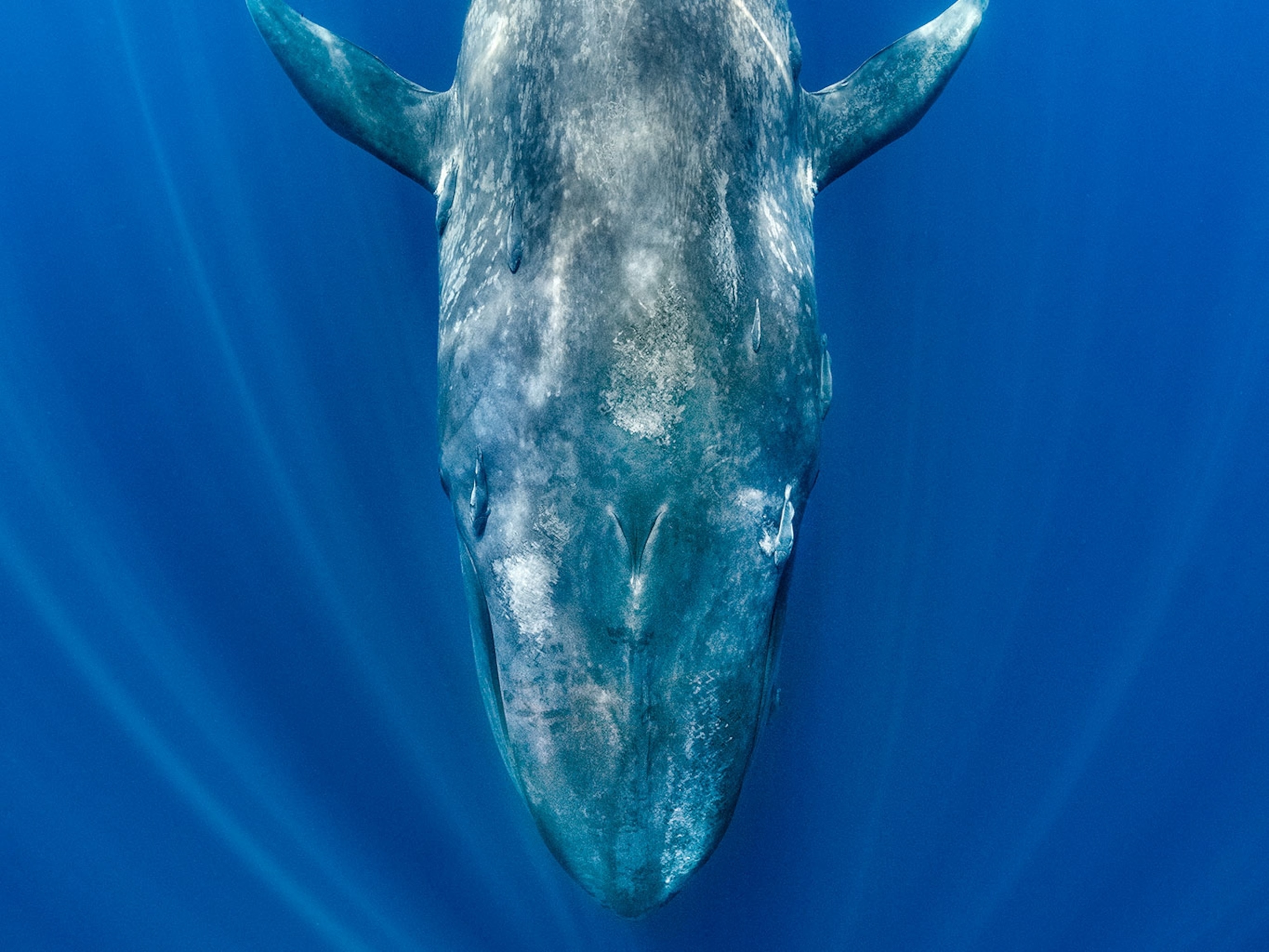
Narwhal's Trademark Tusk Acts Like a Sensor, Scientist Says
The Arctic whale's tusk is actually a tooth that can grow more than nine feet long; it has baffled people for centuries.
The arctic whale known as the narwhal is famous for the spiral tusk protruding from its head, but scientists have long battled over the horn's purpose.
On Tuesday, scientists published a study that advances a bold theory about how the whale uses its tusk. They say the horn, which is actually a tooth, is a sensory organ.
The scientists speculate that the tusk, usually found only the males, can pick up differences in the whale's environment, like the salt content of seawater, helping the marine mammals to navigate their frigid homes or perhaps find food.
But the theory is highly controversial; many marine mammal experts reject the idea that the tusk plays a central role in a narwal's ability to sense its environment, insisting that the tooth is most likely a lure to attract mates. (Related: The Mystery of the Sea Unicorn)
"There's just zero evidence" for the possibility that a male narwhal's tusk plays a large role in whether the animal can sense things like changes in salinity or where to find food, says Kristin Laidre, a marine mammal biologist at the University of Washington in Seattle.
Martin Nweeia of the Harvard School of Dental Medicine, lead author of the new study published in The Anatomical Record, agrees that the tusk is like the brilliant feathers of a peacock—used to attract females in the mood to mate. But he says that doesn't necessarily preclude other uses.
"It's very typical for a sensory organ to have multiple functions," he says.
Tickling the Ivories
Nweeia, a practicing dentist, argues that the narwhal's tusk seems especially suited to sense the environment when one considers its anatomy. There are channels scattered throughout the tusk's external layer that allow seawater to enter the tooth.
That layer connects to another underneath—called dentin—that also contains small tubes. Those tubules run to the innermost part of the narwhal's tusk, the pulp, which is full of blood vessels and nerves. The nerves run from the base of the narwhal's tusk directly to the brain.
In other mammalian teeth—like ours, for example—there is no direct connection from outside stimuli like cold water to the brain unless there's something wrong with the tooth, Nweeia explains. (Anyone who's had a root canal can attest to the sensitivity of exposed nerves.)
But in the narwhal, this constant sensitivity to the outside world seems to be normal, he says.
Nweeia's study of live narwhals suggests their tusks can sense changes in salinity, or the salt concentration of water. Different salinities correlated with changes in a whale's heart rate.
But the University of Washington's Laidre notes that researchers collected those heart rate measurements shortly after the whales were captured in nets and brought into shallow water.
A heart rate obtained shortly after an invasive capture reflects the animal's stress, she says, not necessarily its reaction to a change in salinity.
The biologist doesn't disagree with the study's description of the tusk's anatomy. "The narwhal tusk is a tooth, and teeth are sensitive," she says.
But she says that the study authors' conclusions take things too far.
"In mammals, females are critical to helping populations grow," she says. "So there's no way that females wouldn't have a sensory organ that would help them survive or give them sort of an advantage in terms of finding food." (Watch a video to learn more about the narwhal.)
An Elusive Charge
Male narwhals are normally the only ones to sport the long tusks, which can reach up to nine feet long, though females sometimes develop small ones.
From the peacock's tail to deer antlers, it's not uncommon for male animals to advertise their availability. Charles Darwin is probably the best known scientist to suggest that use for the narwal's tusk.
But narwhals are elusive and difficult to study, Laidre says, and we may never know for sure how the whale uses its tusk.
Read The Mystery of the Sea Unicorn on our Phenomena blog.
Follow Jane J. Lee on Twitter.





